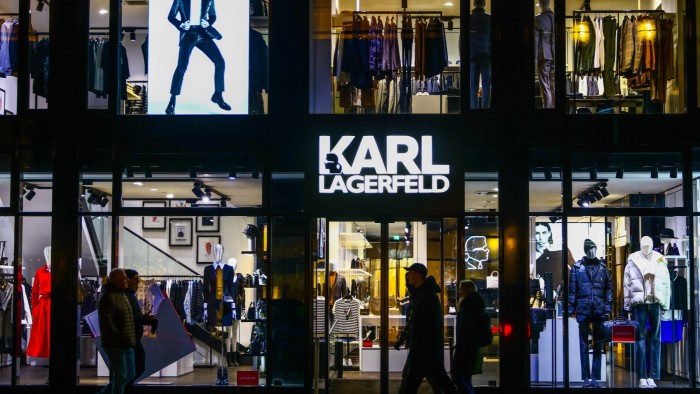Stay informed with free updates
Simply sign up to the Climate change myFT Digest — delivered directly to your inbox.
More than a quarter of the members of the fashion industry’s largest chief executive-led sustainability initiative have failed to set basic climate targets five years on from its launch, and others have quietly quit.
The Fashion Pact, launched by French President Emmanuel Macron at the 2019 G7 summit in Biarritz, brought together major fashion brands, retailers, and manufacturers.
It asks members including Inditex, H&M and Kering to set science-based targets for cutting greenhouse gas emissions by 2030, in line with the Paris Agreement.
But five years later, 14 of the Pact’s 52 members who agreed to set targets have not done so and have not committed to setting goals either, according to data from the Science Based Targets initiative, the world’s leading independent arbiter for corporate climate targets.
Italian fashion group Calzedonia, shoe retailer Geox, and late Chanel designer Karl Lagerfeld’s eponymous luxury brand are among members who have failed to set targets.
Apparel group MF Brands, has also not committed to setting targets at a group level, though three of its five brands have: Lacoste, Gant and French outdoor wear maker Aigle.
Geox said it was in the process of calculating its carbon footprint and was aiming to become aligned with science based targets next year. None of the others responded to a request for comment.
Eva von Alvensleben, secretary-general of the Fashion Pact, said “we are conscious of the progress that needs to happen”, acknowledging that “the industry needs to move faster and go further”.
She added that since November last year, the Fashion Pact had provided “a collective science-based targets support strategy” and a new requirement for all members to commit to setting these targets by the end of 2025.
A spokesperson for the Science Based Targets initiative cautioned that “companies that set [near-term decarbonisation targets] now and in the coming years will be required to tackle their emissions at an accelerated rate”.
Eve Fraser, a climate policy analyst at the non-profit NewClimate Institute, said that Fashion Pact members’ failure to set targets demonstrated the need for “more ambition in multinational companies” across all sectors, and the limitations of voluntary initiatives.
Fraser also warned of a noticeable “implementation gap” between “targets and the actual implementation of sustainability and decarbonisation measures” for members with approved targets, including Nike, H&M Group and Inditex.
American department store Nordstrom quietly left the Fashion Pact this year. Former members who left in previous years include British department store Selfridges and luxury brands Stella McCartney and Hermès.
Nordstrom and Hermès did not respond to requests for comment while Selfridges and Stella McCartney declined to comment on their exit from the Pact.
The industry is the source of 8-10 per cent of total greenhouse gas emissions, according to the UN, or almost three times aviation. But its progress in cutting emissions is made more complex by highly polluting supply and value chains often spread across multiple countries.
While about half of major fashion companies had set verified targets, their emissions from the wider value chain, which make up around 96 per cent of brands’ emissions, were still rising, according to a report this year by campaign group Fashion Revolution.
Read the full article here

